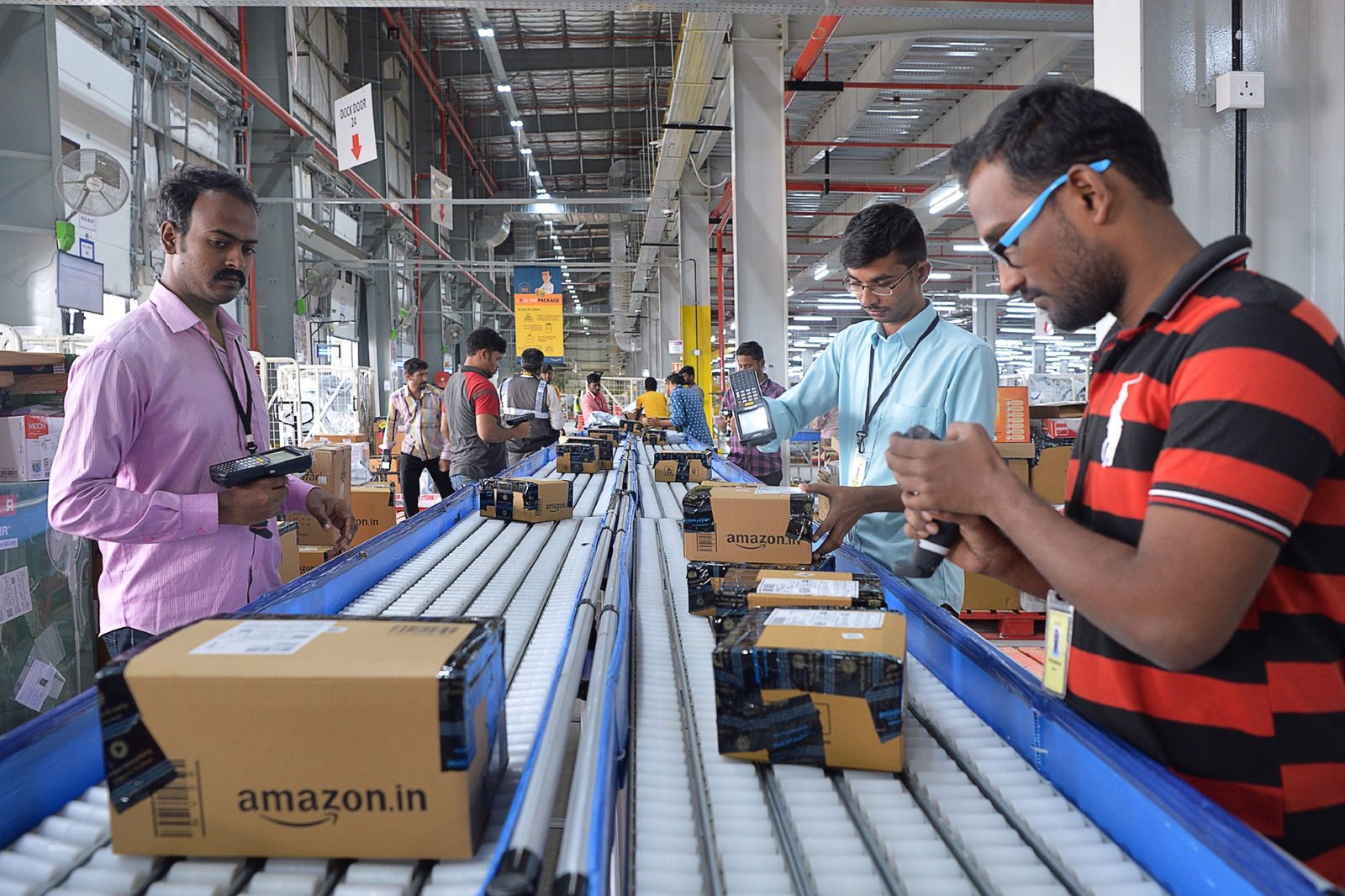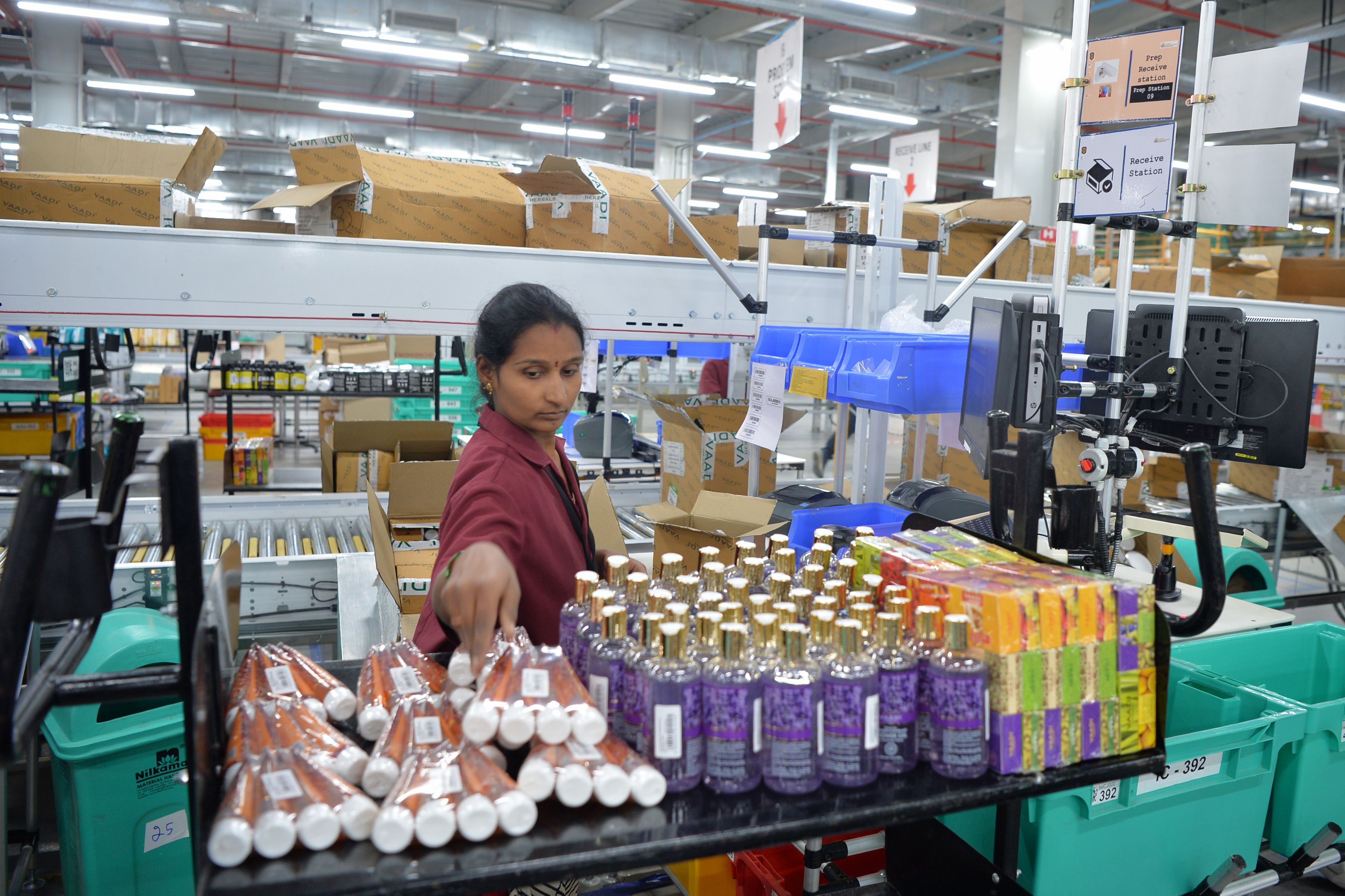Trends
Amazon In Hot Water Over Labour Conditions At Indian Warehouse. What’s Really Going On?
Published
11 months agoon

Amazon, the global e-commerce giant known for delivering everything from books to groceries at lightning speed, has on many occasions found itself in a less-than-glamorous spotlight. Currently the company is facing legal action in an Indian court over alleged labour law violations at one of its major warehouses near Delhi, located in Manesar, Haryana.
This all started with a disturbing report from May – workers were allegedly asked to pledge—yes, pledge—not to take breaks, even for basic needs like water or bathroom visits, until they hit their targets. It sounds almost medieval, and while Amazon confirmed this happened but quickly labeled it as an “unfortunate and isolated” incident. The manager responsible? Gone, Amazon assures us.
But the fallout didn’t end there. The Haryana government stepped in with a “detailed investigation,” and the findings weren’t pretty.
According to their labour inspection report, Amazon was flouting multiple labour laws. Safety gear? Missing. Employment identity cards? Also missing. And then there’s the issue of workers—especially women—wearing loose clothing around moving machinery, a serious safety hazard. The law requires tight-fitting clothes near such equipment to prevent accidents, but Amazon reportedly wasn’t following this rule.
Fast forward to June, and Amazon found itself summoned to a court in Gurugram. The Court date originally October 28, but it’s now pushed to December 10. In legal terms, this might be just a delay, but for Amazon, it’s a growing PR nightmare.

Worker Treatment Scrutiny
This isn’t the first time Amazon has faced criticism over how it treats its workers. Across the globe—from the U.S. to the U.K.—Amazon’s warehouses, or as they call them, “fulfilment centres,” have been under the microscope for harsh working conditions. With more than 60 such centres across India and over 1.5 million employees worldwide, Amazon’s labour practices are under increasing scrutiny.
In India, where over 100,000 people are employed by Amazon, these allegations hit close to home. The Manesar warehouse alone has more than 1,800 workers responsible for keeping the wheels of Amazon’s delivery machine turning. They’re the unsung heroes receiving, sorting, packing, and shipping thousands of orders every day.
Amazon’s Warehouse Targets Under Scrutiny
According to a media report, workers at Amazon’s warehouse in Manesar, Haryana, paint a picture that’s far from the polished image of “fulfilment centres” the company promotes. Behind the scenes, the reality seems a lot harsher.
One worker, who’s been with Amazon for nearly five years, described their job as relentless: “In one hour, I have to process 60 items—returned products. For each item, I need to open the box, check for damage, review the customer’s comment, and verify if it’s sellable. That’s one product per minute.” Speaking on the condition of anonymity, this worker spoke about the lack of breaks and the crushing pressure to meet quotas.
The Debate
Amazon, however, insists the targets are manageable. In a letter to India’s Labour and Employment Ministry in June, the company claimed it was “confident” that its targets are “comfortably achievable” and that it has “sufficient headroom in capacity,” expanding operations when necessary.
Yet, the Haryana government’s labour inspection team saw things differently. Their investigation revealed that there was no written agreement between workers and warehouse management regarding these targets. Instead, workers reported that targets were verbally communicated, raising questions about transparency and fairness.
Responding to the scrutiny, an Amazon spokesperson stated: “There’s nothing more important to us than the safety and wellbeing of our employees and associates. We comply with all relevant laws and regulations. Our facilities are industry-leading, offering competitive pay, comfortable working conditions, and infrastructure designed to ensure a safe and healthy environment.”

Reality Check
Despite Amazon’s assurances, the worker accounts from Manesar suggest a different reality—one of high-pressure environments where rest is a luxury. While Amazon portrays its warehouses as innovative hubs with well-designed infrastructure, the people working on the ground speak of strict quotas and little room for respite.
Clocking in for a 10-hour shift, workers get two 30-minute breaks, which might sound decent—until you realize the remaining nine hours are spent standing. One worker from the inbound department, responsible for unloading and organizing products, described the situation: “We have to do all the tasks assigned to us on our feet. We are not allowed to even sit.”
Even the breaks are a race against time. Workers must queue for the cafeteria, access their lockers, use the restroom, and return to their stations—all within 30 minutes. “There’s no separate place to rest,” the worker added.
Amazon acknowledged the lack of additional resting spaces, stating in a letter to India’s Labour and Employment Ministry that it is “evaluating” whether more seating arrangements can be made. The company also claimed workers can take informal breaks, though employees dispute this, saying they can’t afford to, especially with the looming pressure of meeting their hourly targets.
ADAPT
At the heart of Amazon’s performance monitoring is its ADAPT system—Associate Development and Performance Tracker. This tool logs every second of a worker’s day, flagging any “idle time.” According to workers, falling behind on targets triggers a “negative ADAPT,” and three of these within 22 days can result in blacklisting from any Amazon warehouse.
One employee expressed frustration: “We are working relentlessly to ensure that deliveries are on time… but our biggest worry is whether we are meeting our targets. This feeling should go.”
Amazon defended the system, stating that it helps track performance to support underperforming employees with coaching. However, critics argue that the constant surveillance creates a toxic work environment.
Earlier this year, French regulator CNIL fined Amazon over $34 million for using an “excessively intrusive system” to monitor employees. While Amazon has appealed the fine, the controversy highlights global concerns over the company’s labour practices.

Workers’ Voices and Union Concerns
Nitesh Kumar Das, an organiser with the Amazon India Workers Association (AIWA), said: “People join Amazon with aspirations of working at a multinational company. But the reality is that workers often report high pressure to meet unrealistic targets.”
In a survey conducted by AIWA and UNI Global Union, over 80% of warehouse workers in India found Amazon’s targets difficult to achieve. Amazon dismissed the survey as “factually incorrect,” insisting that its internal data paints a different picture.
Still, the workers’ experiences tell a story of exhaustion and discontent. “We want to be treated with dignity,” said a worker who believes that the ADAPT system needs to be abolished.
The Last Bit
While Amazon touts its competitive pay and cutting-edge facilities, the on-the-ground reality, at least according to these workers, seems far from ideal.
As India’s labour ministry continues its investigation with a court hearing on December 10, Will Amazon step up and address these concerns head-on, or will this be another chapter in its long history of labour controversies?

You may like
-


Salvaging The $44 Billion Investment In X. Winds Of Change For Musk Amid His ‘Fix’ Mission Over High Support For Zelenskyy On X
-


Layoffs Are Back. JPMorgan, Chevron, And More—Why Across All Sectors Nearly Half Of Companies Expect Job Cuts In 2025?
-


Elon Musk’s Bold Bet, Big Win As Amazon Returns, Sues Other Major Brands Over Ad Boycott. Can Legal Action Revive X’s Ad Revenue?
-


Will 2025 Be The Year Of Layoffs? What Are The Top Job Picks And Will Your Pay Package Be Heavier?
-


Extortion Or Merely Obliging? From “Jeff Bozo” To “Zuckerschmuck,” Big Tech Titans Are Suddenly Singing A Different Tune For Trump’s Inaugural Fund.
-


Google’s Breakthrough in Quantum Computing: A New Chip. The Global Race, Why Quantum Computing Matters For Geopolitics? And The US-China Rivalry